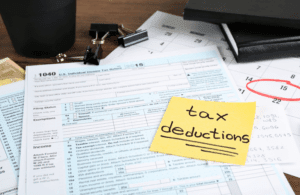Cost Accounting: Principles, Methods, and Decision-Making Tools

Effective asset management requires a systematic approach, such as using technology what are retained earnings to monitor assets, setting regular maintenance schedules, and implementing inventory control strategies. By optimizing asset management, companies can extend the lifespan of their assets, reduce downtime, and lower overall maintenance and replacement costs. Asset management is a crucial part of cost control as it focuses on maximizing the value of company assets and minimizing the cost of maintenance and replacement.
- While not always accurate (installation time may be shorter the more units you install at a time, for example), unit-rate will always be a tool on the table of any cost engineer.
- It is a reactive strategy that seeks to address cost overruns after they have already occurred.
- Regular review and adjustment of cost control strategies based on performance metrics and market conditions ensure ongoing effectiveness.
- Cost Control is important because it helps businesses and organizations manage their finances effectively.
- Effective cost control measures and initiatives can improve the project’s bottom line and overall financial performance.
Budgetary control
By digitizing expense reporting, receipt capturing, and approval workflows, Happay streamlines the entire process, saving time and resources. The waste reduction strategy aims to minimize waste generation and maximize resource utilization. This is achieved by implementing recycling programs, optimizing production processes to minimize scrap or rework, and promoting sustainable practices. TABLE 1.1 Average daily total camp cost as the sum of the cost of walking time plus the cost of moving camp. The workers’ reluctance to adapt to new cost-effective practices and procedures can hinder the company’s ability to save money. Without proper data management, an organization may miss warning signs that a process is not functioning optimally.

Performance measurement
It helps evaluate cost management effectiveness by identifying if the actual costs are over or under the budgeted amounts. The first step in project cost management is to define the baseline for your project’s budget. This involves identifying all potential costs and inputs related to the project, including labor, materials, equipment, and any other expenses.
Professional services industry
Regularly reviewing cost performance indicators and comparing them to the baseline can help keep the project within budget. Just like personal budgeting, you can do a variety of things, like categorize spending, determine areas where your team spends the most money, and find ways to limit spending in each area. Successfully doing all these things is what controls the budget and increases profits. It has to be monitored continuously, and decisions regarding budgets and execution need to be taken cautiously.
Cost cost control management assumptions are the underlying factors and conditions that affect how cost management is performed and what results are expected. In this section, we will explore some of the common cost management assumptions and how they influence the cost management process. We will also discuss how to identify, validate, and document the cost management assumptions for a project or a business. Standard cost accounting sets predetermined standard costs for materials, labor, and overhead. In this process actual costs are compared with the standard costs, enabling organizations to identify and address cost variances.
![]()

Cost management in project management is the process of planning, estimating, budgeting, and controlling costs with the aim of completing the project within the approved budget. It involves a continuous process https://www.bookstime.com/articles/accounting of measuring and monitoring project activities and expenses and implementing necessary adjustments to ensure that the project’s financial resources are used effectively. Activity-based costing (ABC) allocates overhead costs based on the activities that drive those costs. This method provides a more accurate picture of product costs, especially in complex environments with diverse products and services.
Chapter 8: Monitoring Foodservice Operations I: Monthly Inventory and Monthly Food Cost.

Five cost control methods include budgeting and forecasting, process optimization, vendor management, waste reduction, and implementing technology solutions for automation. Organizations will proactively identify and manage risks that may impact cost performance, such as supply chain disruptions, market fluctuations, and regulatory changes. This will involve implementing risk mitigation strategies and robust contingency plans. The adoption of digital technologies, such as cloud computing, automation, and artificial intelligence, will revolutionize cost control practices.
- Quality control measures typically involve a systematic approach to identify and correct flaws or defects in products or services.
- Happay integrates with enterprise resource planning (ERP) systems, enabling seamless synchronization of financial data.
- Keep in mind that any changes to the project scope will impact the project budget and costs, so keep a close eye on scope creep.
- In the realm of small business operations, the strategic management of postal expenses stands as a…
As the ultimate goal, emphasising the delineation of controllable and uncontrollable factors. Comprehensively analyzing various constraints in the scheme and analyzing and comparing costs and effects. Effective cost control contributes to better project quality by ensuring sufficient resources are available for critical quality-related activities. To properly control costs, teams must monitor spending at various levels within the company. This allows each part of the company’s budget to receive thorough attention and analysis.